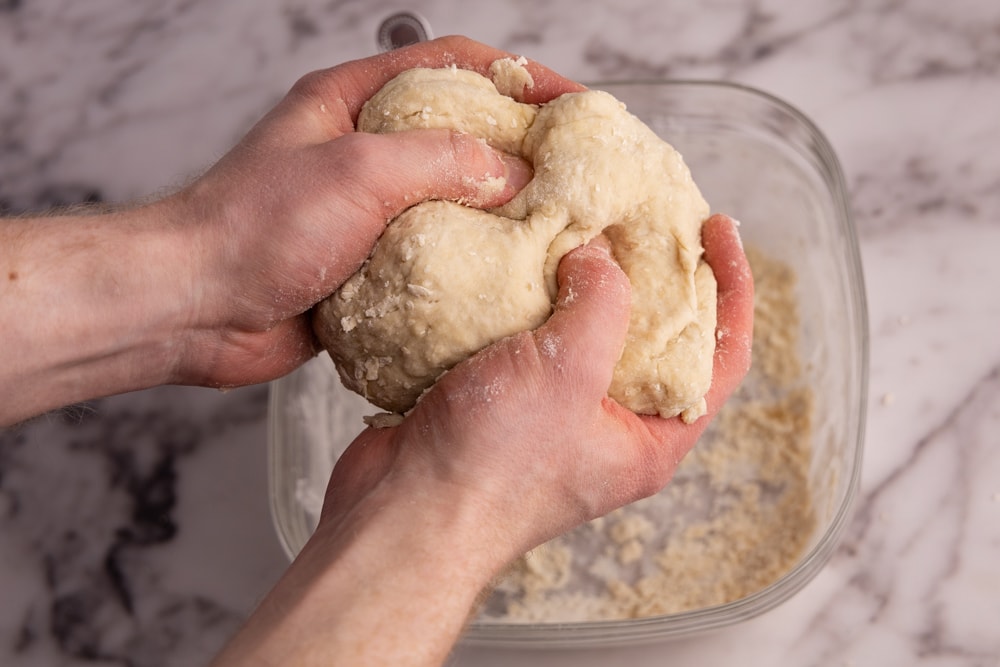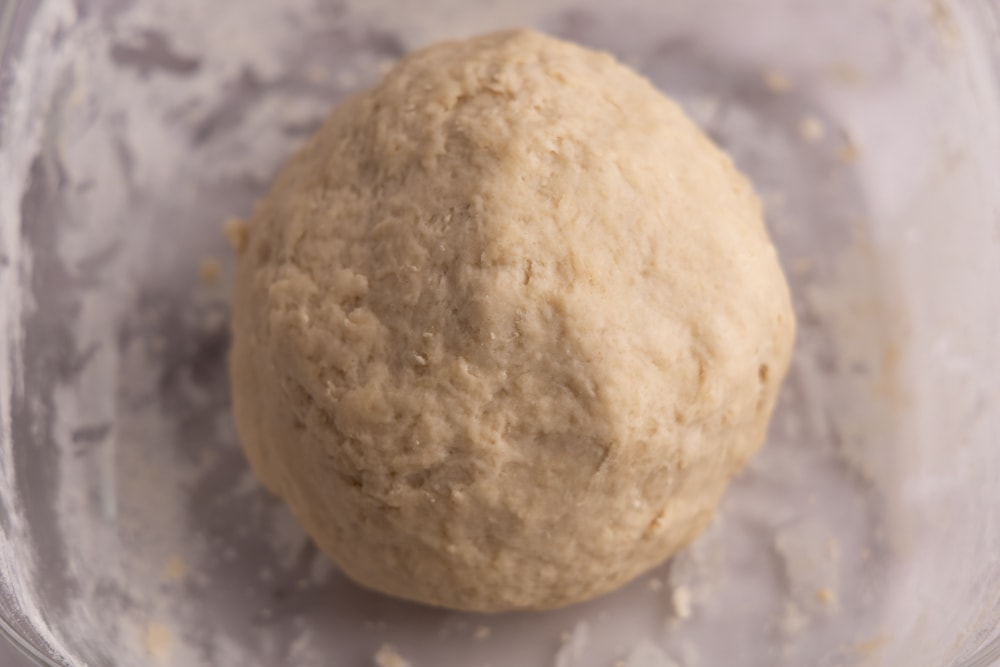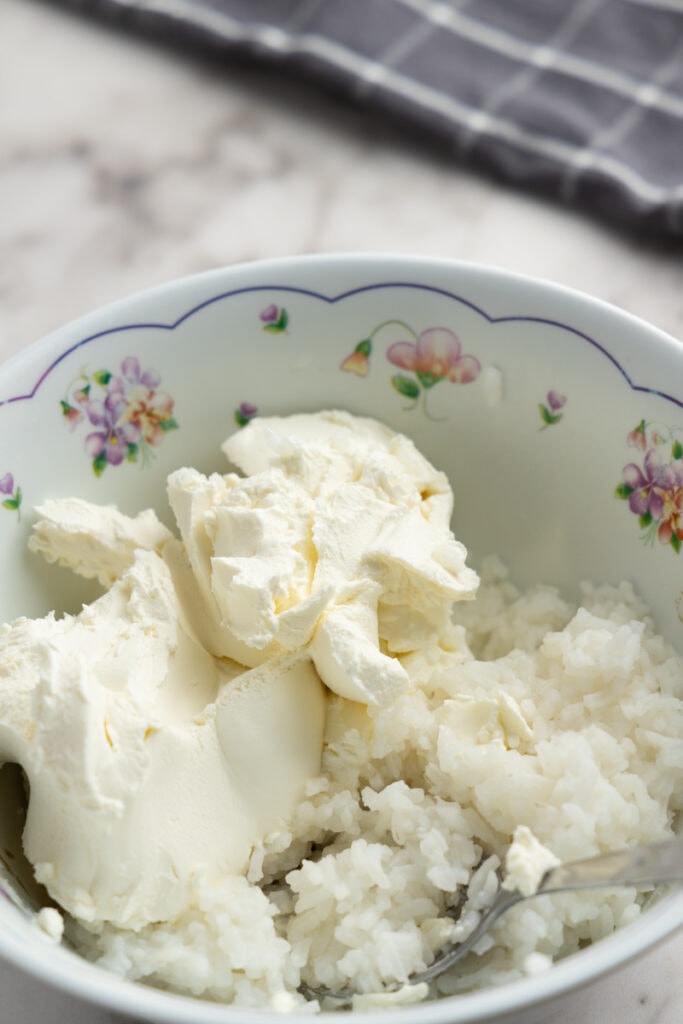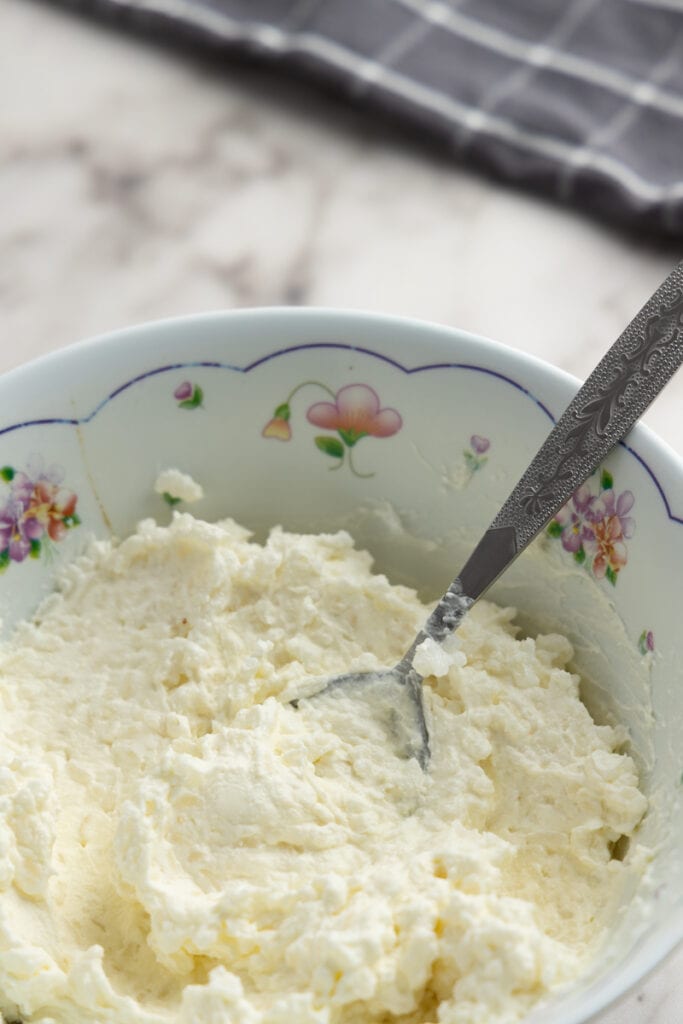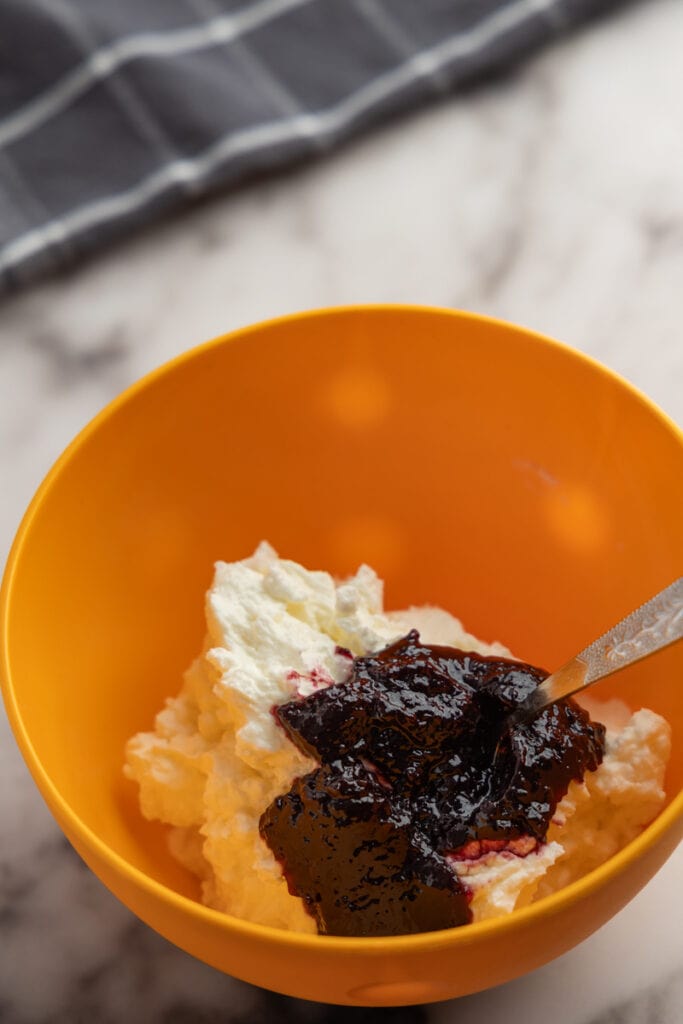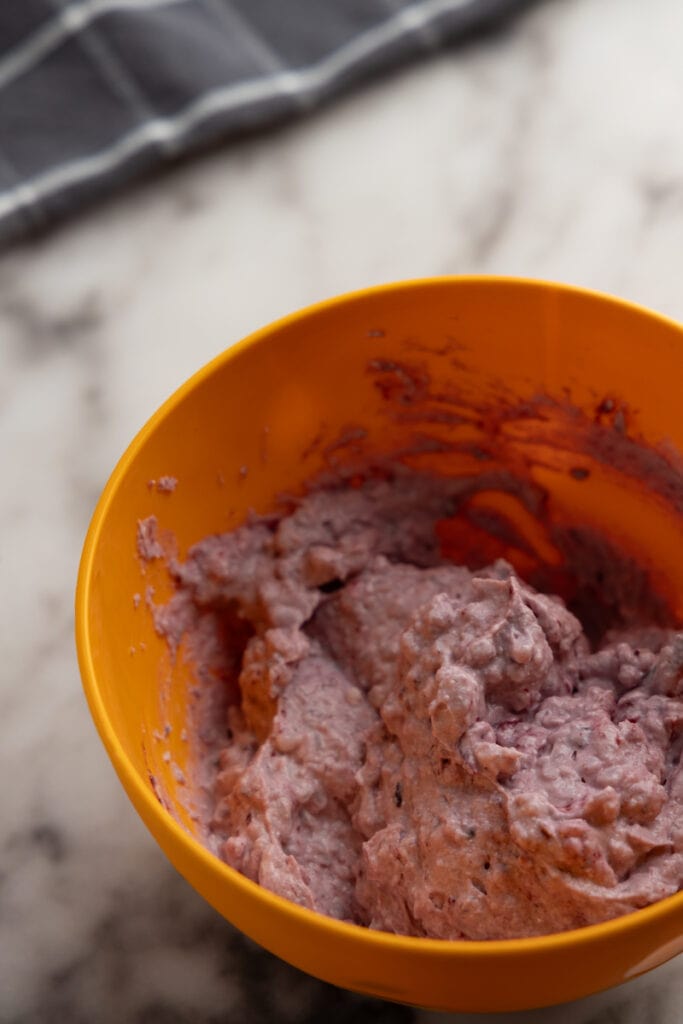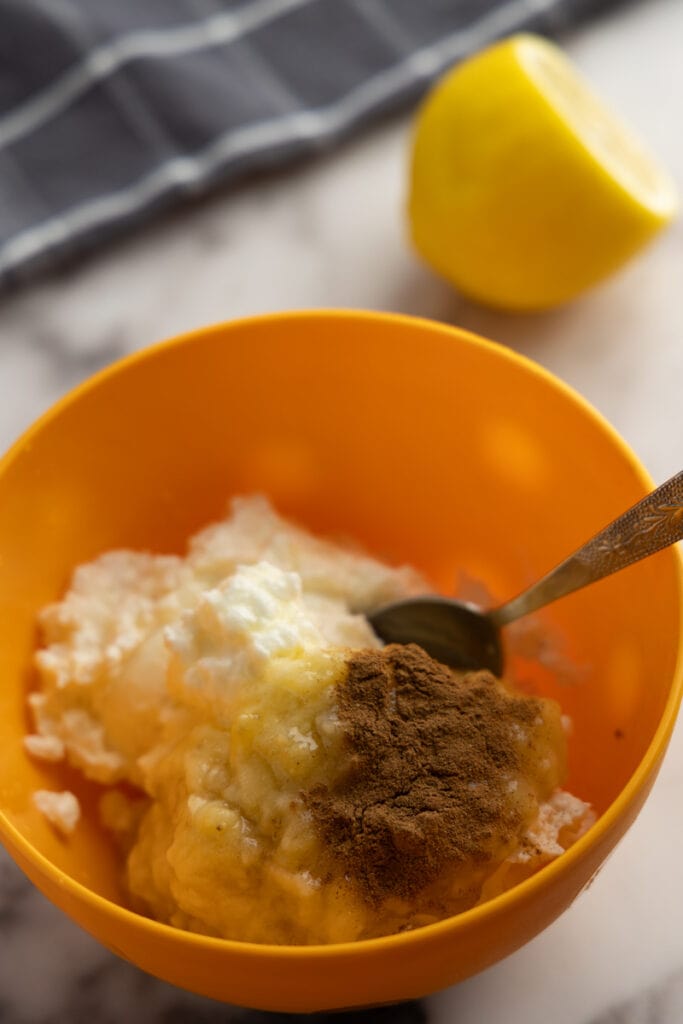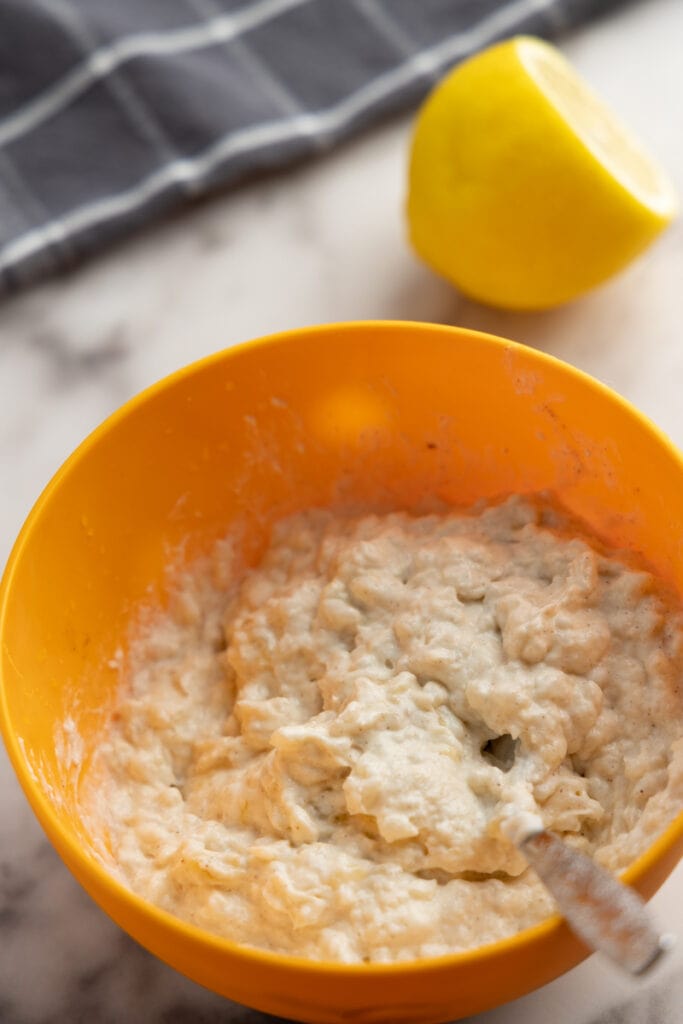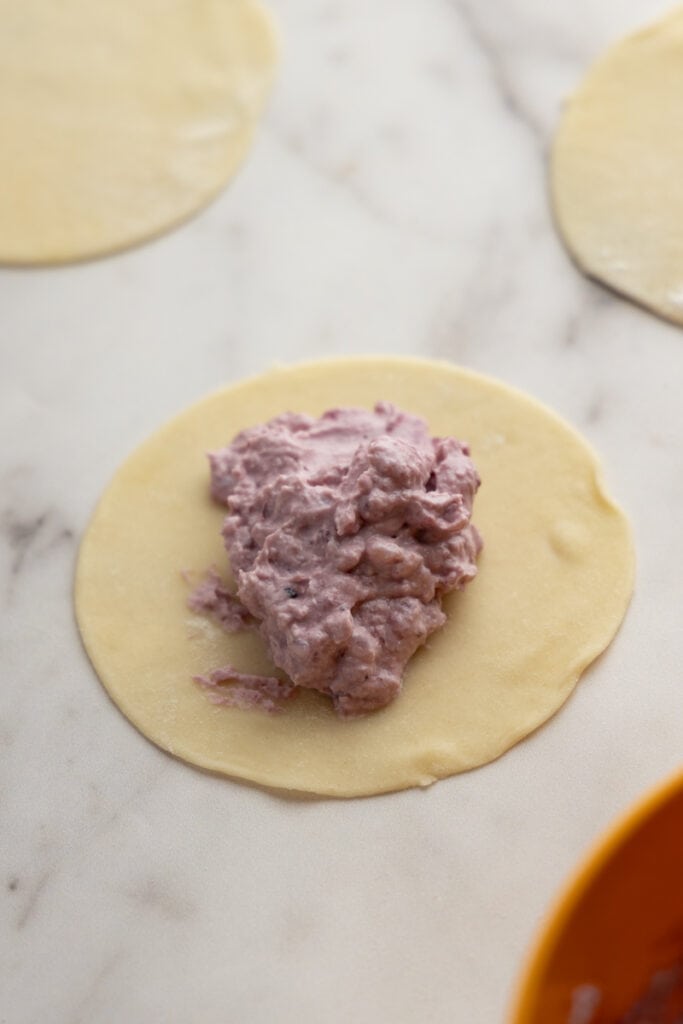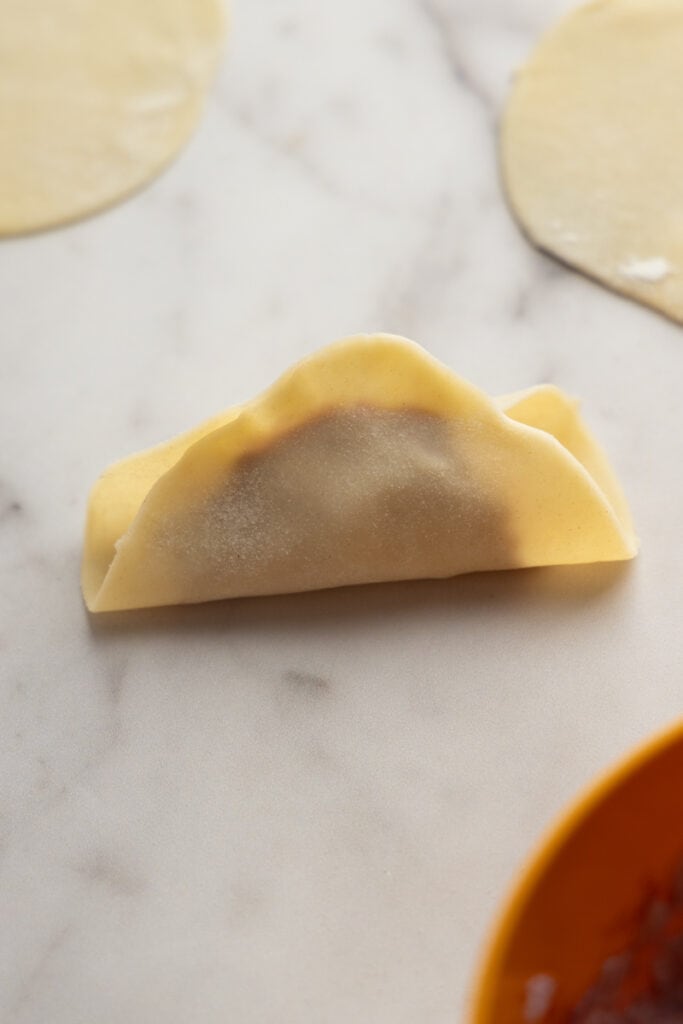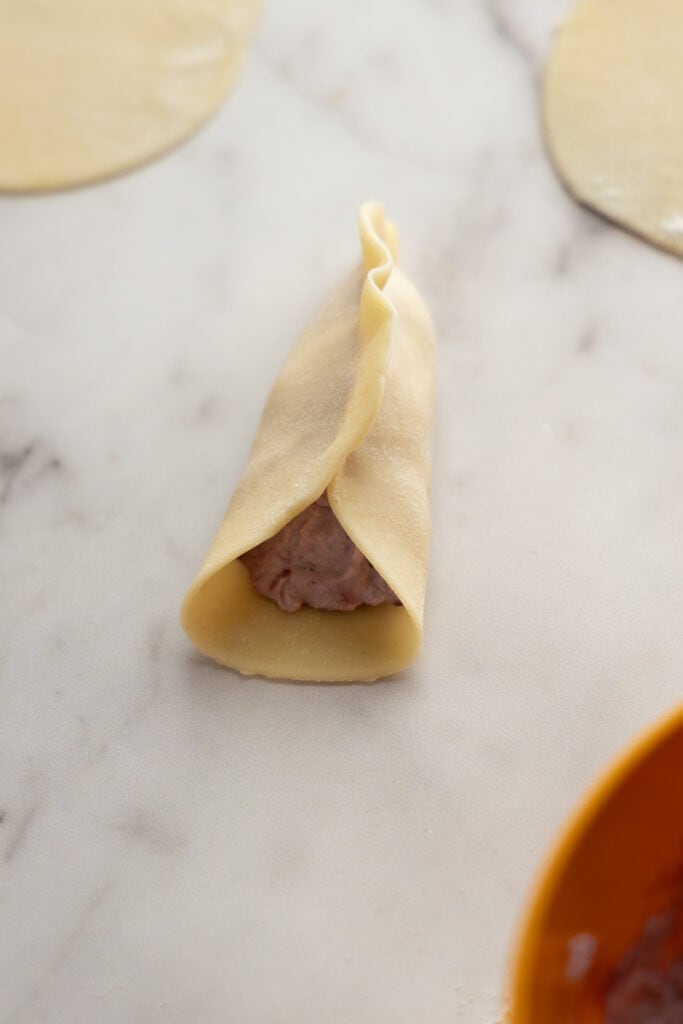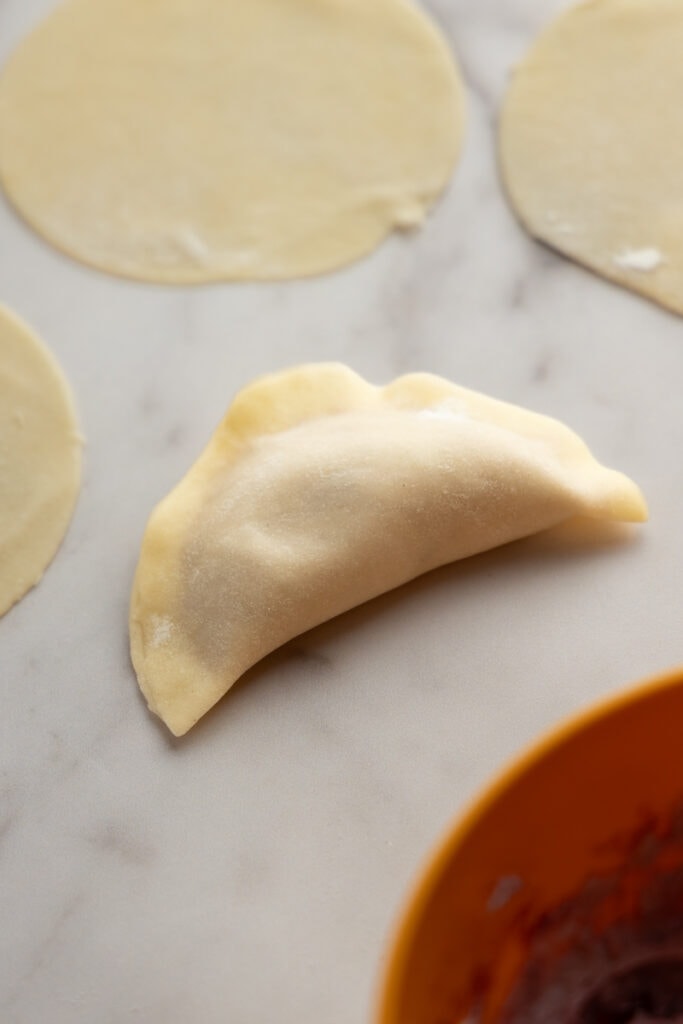Sweet Cheese Pierogi Recipe [+2 Flavoring Options]
This post may contain affiliate links. Read our privacy policy.
Are you craving the comforting taste of Poland’s sweet cheese pierogi, but can’t find the traditional farmer’s cheese? Don’t worry! In this guide, we’re taking a creative twist on the classic recipe by using everyday ingredients like cream cheese and rice.

In Poland, sweet cheese pierogi are traditionally crafted using farmer’s cheese, a variety that is characteristically dry, firm, and perfectly suited for this delectable dish.
If that’s what you’ve got in your fridge, you can find a recipe for farmer’s cheese pierogi here. If not, stick around, and I’ll show you a cool alternative.
One issue with farmer’s cheese (or quark) is its availability, as not everyone can find it at the local grocery store. That’s why I wanted to use something more readily available in this recipe.
Cream cheese is a pretty good stand-in, tasting a lot like farmer’s cheese (I use it in potato and cheese pierogi, too). The only hiccup is that it’s a bit too soft and creamy for pierogi.
To fix this, we add a generous amount of cooked rice to the mixture. When blended with the cream cheese—particularly if you overcook it—the rice lends the filling a firmer consistency, making it easier to work with.
Alright, ready to dive into the recipe? Let’s go!

Recipe At a Glance
Here’s why I think you’ll love this sweet cheese pierogi recipe:
- You probably have everything you need. By swapping out farmer’s cheese for cream cheese and tossing in some rice, you most likely have all the ingredients in your kitchen.
- You can have fun with it. Cream cheese and cooked rice make a super flexible base. I’ll share two simple ways to flavor it below, but feel free to go wild and use what you’ve got. Heck, a spoonful of sugar added to the base is enough to make it taste good.
- You can taste-test different flavors all at once. Split the cream cheese and rice into parts, add various flavorings, and try them all in one go.
So, are you convinced yet? Give it a try, and let’s make some pierogi together! It’s going to be delicious, I promise.
As usual, if you’re making sweet cheese pierogi for the first time, read the ingredients notes, step-by-step instructions, and tips. If you’re a veteran, feel free to jump to the recipe card.
Extra Learning
Before we jump in, here are a few handy resources to help you nail this recipe:
- Homemade Pierogi for Beginners. My pierogi guide that walks you through the pierogi making process, start to finish. Whether you’re new to pierogi or just need a refresher, this guide has you covered.
Ingredients and Substitutes
Pierogi Dough
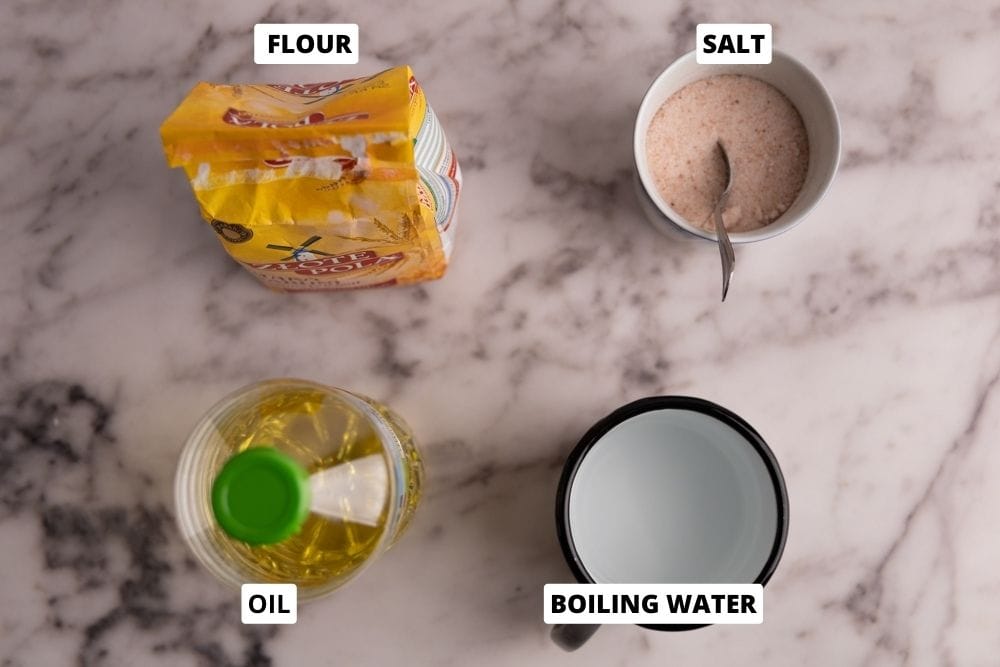
- Flour. Use all-purpose flour. If you use something like bread flour or whole wheat flour, you will need noticeably more liquid to achieve the right dough texture.
- Oil. Use a neutral-flavored oil, such as your regular cooking oil. Avoid olive oil as it can be bitter, which may affect the dough’s flavor.
- Salt. Use fine-grained salt for best results.
- Water. Plain boiled water is all you need; no need to be fancy here.
Sweet Cheese Pierogi Filling

- Cream cheese. You can use ricotta cheese instead, but it’s not a simple one-to-one substitution. I cover it in detail in the Subbing in ricotta section below.
- Rice. Plain white rice is best, but white jasmine or basmati should work in a pinch.
- #1 Flavoring option: jam. You can use any jam, jelly, or any other fruit preserve you like. In fact, you should try different ones to find which one you like best. Quick note: you might need to add extra sugar if your preserve of choice is on the tangy side.
- #2 Flavoring option: mashed banana, honey, cinnamon, and lemon juice. You can replace honey with any other sweetener but don’t skip the lemon (or lime) juice. Without it, the filling lacks the tanginess it needs to shine. Now, don’t get me wrong, if you skip the lemon juice, the filling will still be okayish, but that extra kick of freshness the juice provides takes it to the next level.
Step-By-Step: How to Make Sweet Cheese Pierogi
Step 1: Make Dough
(Read more about this in our 4-ingredient pierogi dough recipe.)
- Boil a pot of water.
- Sift flour into a large bowl. Sifting probably isn’t necessary, but I recommend it anyways. Plus, it’s something you can do while waiting for the water to boil.
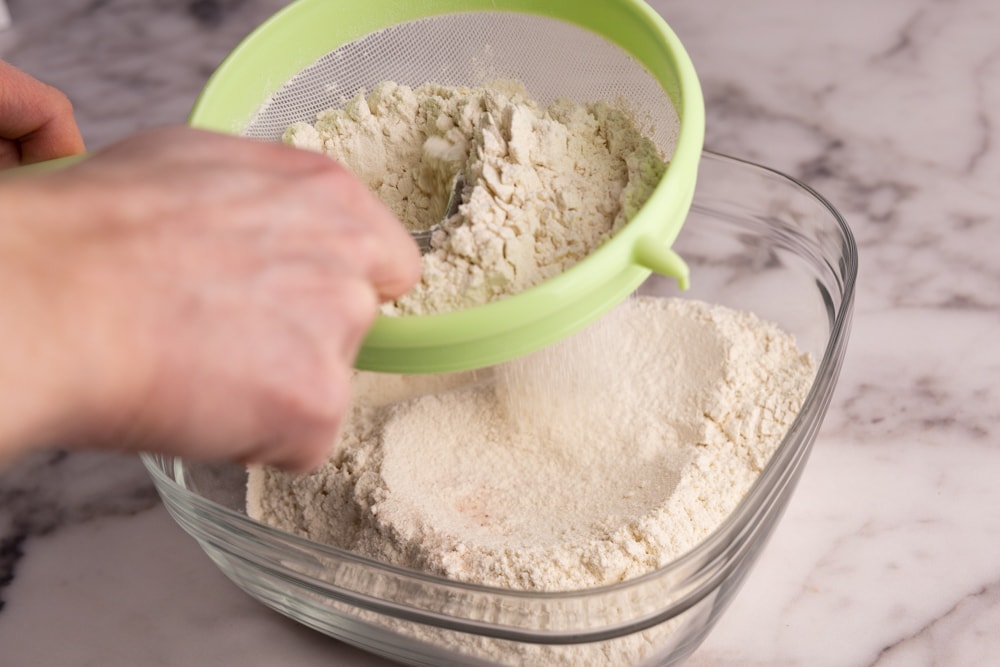
- Add salt and mix. Just a quick stir to spread the salt.
- Add oil and boiled water.
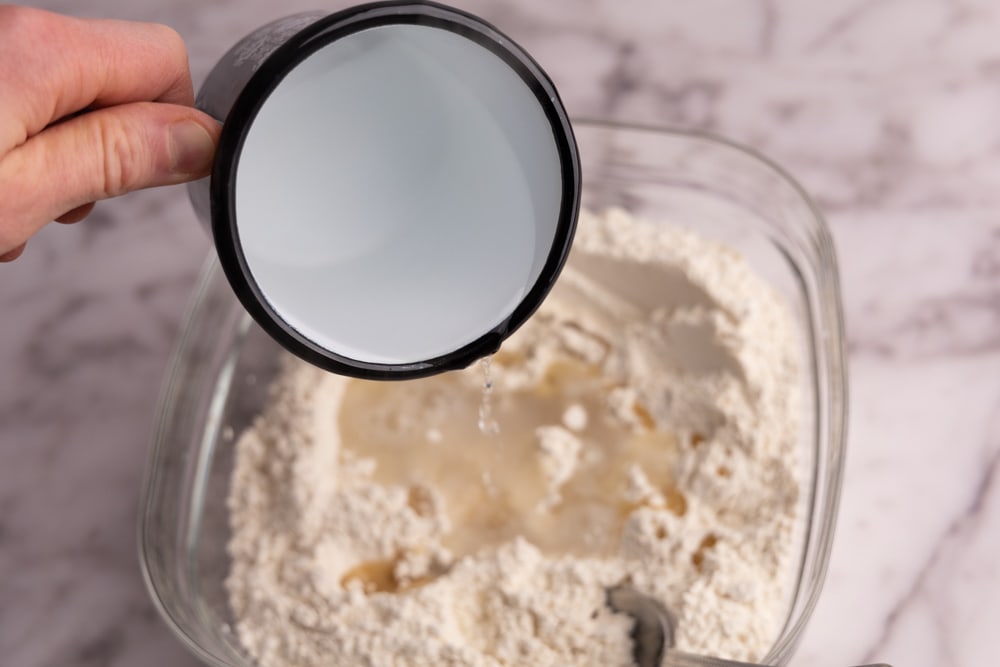
- Mix. Mix the ingredients by stirring with a regular tablespoon or a large wooden spoon. Be careful not to burn yourself, as you will be working with water that was boiling just a few moments ago. Stir until you reach the point where there is no visible water in the bowl, then switch to using your hands.
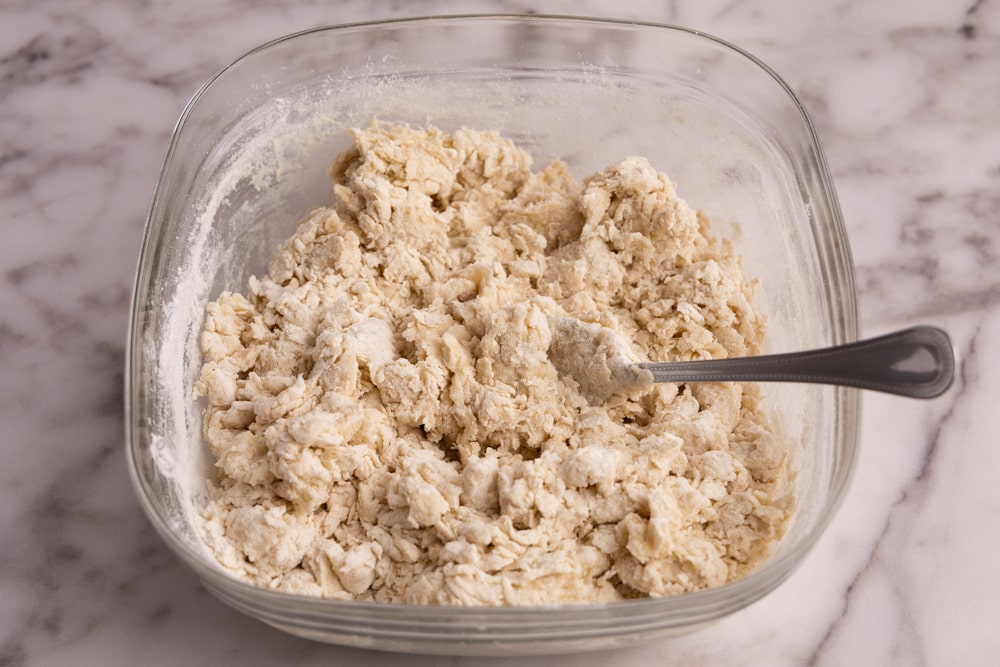
- Knead. Start slowly and make sure the dough isn’t too hot to handle. Knead until you have incorporated all the flour into a homogeneous dough ball, which usually takes 4 to 8 minutes.
 Kneading in progress. Note that there’s still flour left in the bowl.
Kneading in progress. Note that there’s still flour left in the bowl. Dough ready – all the flour is incorporated and the dough is pretty homogenous.
Dough ready – all the flour is incorporated and the dough is pretty homogenous.
- Wrap and rest. Wrap the dough ball tightly in plastic wrap and let it rest for about 30 minutes before continuing. This will allow the dough to relax and become easier to work with.
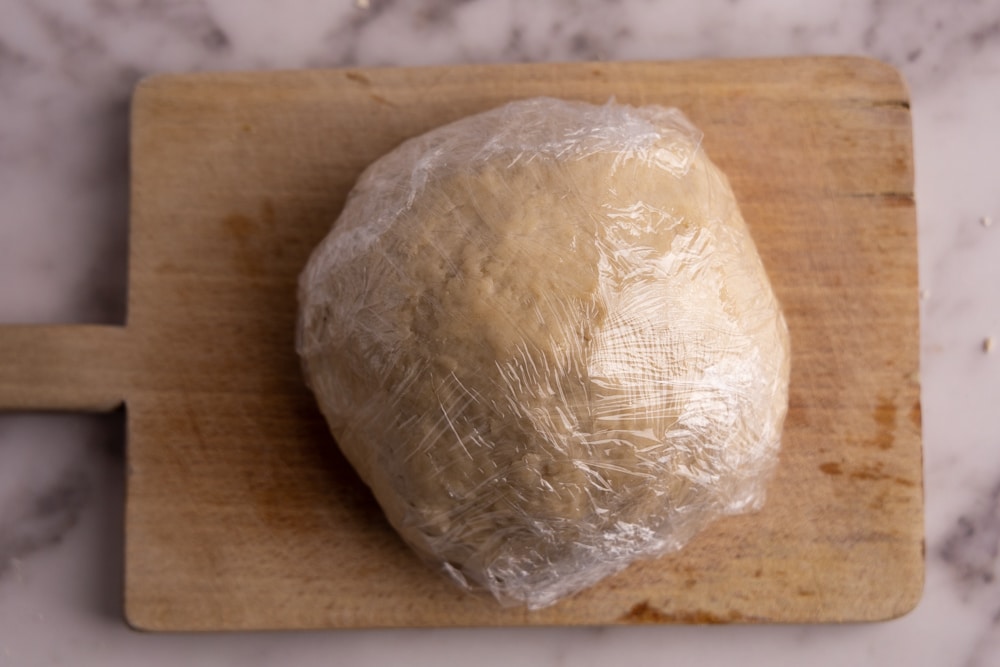
- Make pierogi. Once that half an hour of waiting is over, the dough is ready for rolling and making pierogi.
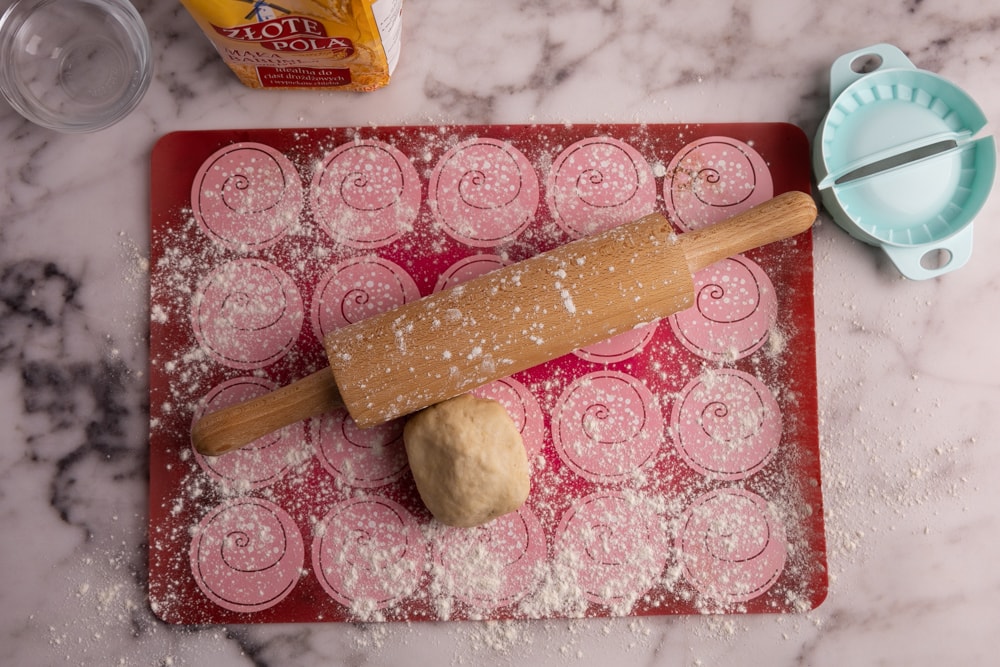
Step 2: Prep Filling
- Cook the Rice: Cooked the usual way, rice triples in weight, but if you leave it for a couple of extra minutes and add plenty of water, it can get up to 4x its initial weight. So for 12 oz of cooked rice, take 3 to 4 oz (about half a cup) and cook it with plenty of water (5x the rice volume) and your usual pinch of salt. Let it go for a few minutes longer than the package says—around 20 to 22 minutes—so it’s sticky and creamy. Taste and add more salt if you think it needs it.
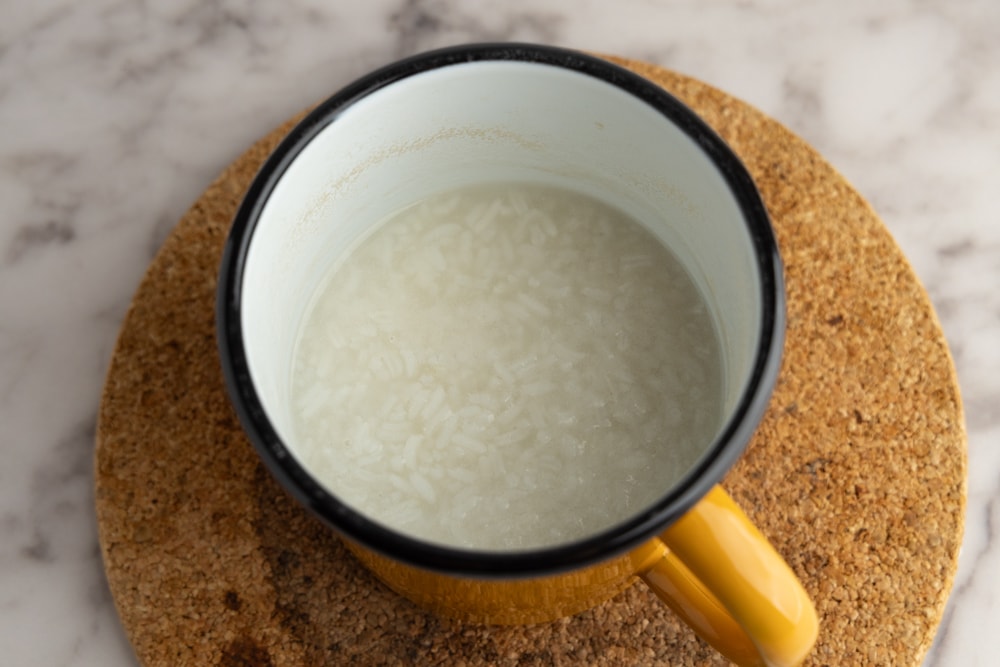
- Prepare the Filling: Grab the cream cheese, overcooked rice, and your favorite flavoring, and stir them all together. Taste and tweak as you like. More sweetness? Add sugar or honey. Needs a zing? A dash of lemon juice should do the trick.
 Add cheese to rice
Add cheese to rice Base is ready
Base is ready Adding jam to base
Adding jam to base Jam flavoring ready
Jam flavoring ready Adding mashed banana & the rest to base
Adding mashed banana & the rest to base Mashed banana flavor ready
Mashed banana flavor ready
Step 3: Combine
- Divide. Divide the pierogi dough into two or three parts. Take one part and spread it on a floured work surface, then roll it out until it’s nice and thin. Be careful not to roll it too thin, as it may tear when you form the pockets and seal the dough around the filling. Wrap the rest of the dough tightly to prevent it from drying out.
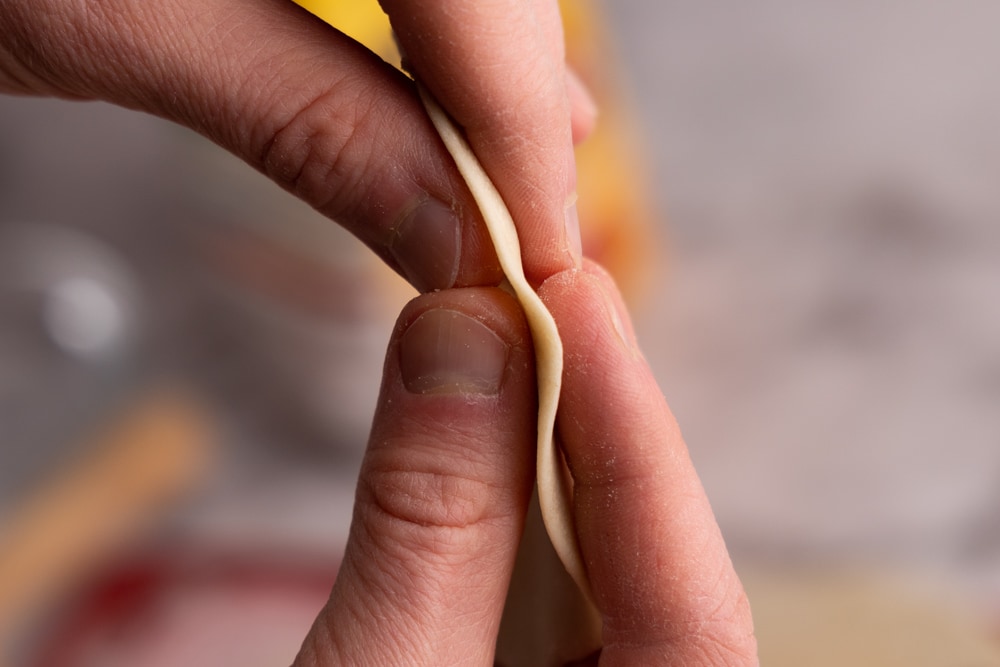
- Cut into circles. Cut palm-sized circles in the rolled pierogi dough. Anything round with a somewhat sharp edge is great, but a simple glass or mason jar works as well. Or use your pierogi maker if you have one. Form a ball with the dough left over after cutting and use it when rolling out the rest of the pierogi.
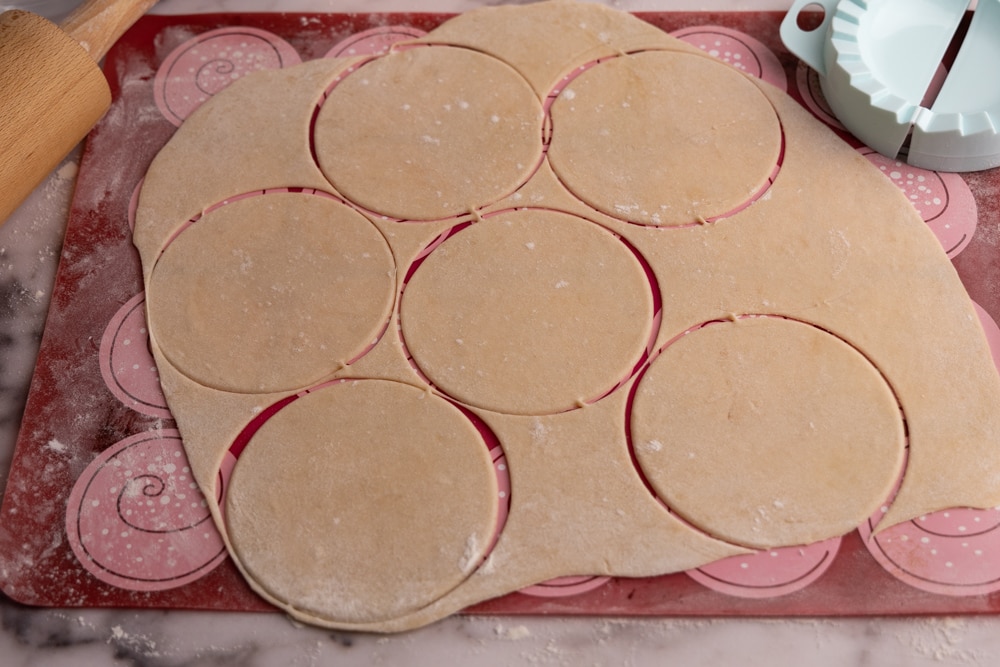
- Shape the Pierogi: Place a spoonful of sweet cheese filling onto a dough circle, fold it over, and press the edges together. Make sure to squeeze out any air that may be trapped. If it doesn’t seal, moisten the edges with a damp finger.
 Add filling
Add filling Squeeze together in the middle
Squeeze together in the middle Squeeze one side
Squeeze one side Finish the other
Finish the other
- Cover with damp towel. Place each formed pierogi on a floured cookie sheet and cover them with a damp kitchen towel. The edges will dry out quickly otherwise. If you want to save space and let the pierogi touch each other, lightly brush the areas where they’ll touch with flour. This will prevent them from sticking together and causing the pierogi dough to tear when removed for boiling.
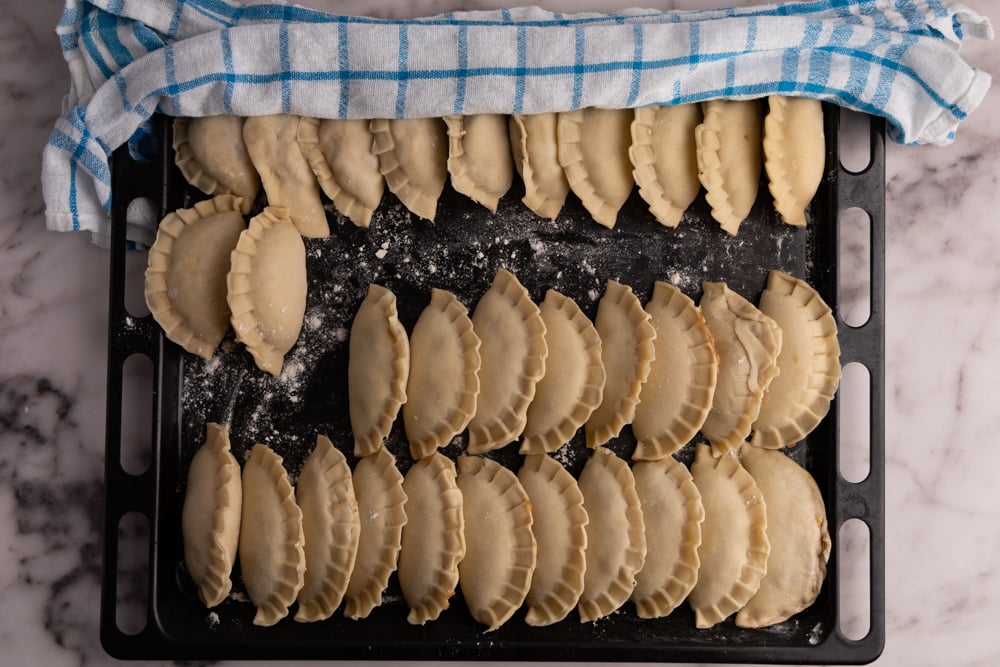
- Make more pierogies. Continue forming pierogi until you run out of dough or filling.
Step 4: Cook
- Boil water. Bring a large pot of salted water to a boil. I typically use one teaspoon of salt per quart of water but feel free to adjust the amount to your preferences.
- Add a few pierogi. Once the water is boiling, add a few pierogi to the pot and stir them to prevent them from sticking to the bottom. Once the pierogi start floating to the surface, simmer them gently for another 3 to 4 minutes. Make sure not to overcrowd the pot so that the pierogi don’t stick together or cook unevenly.
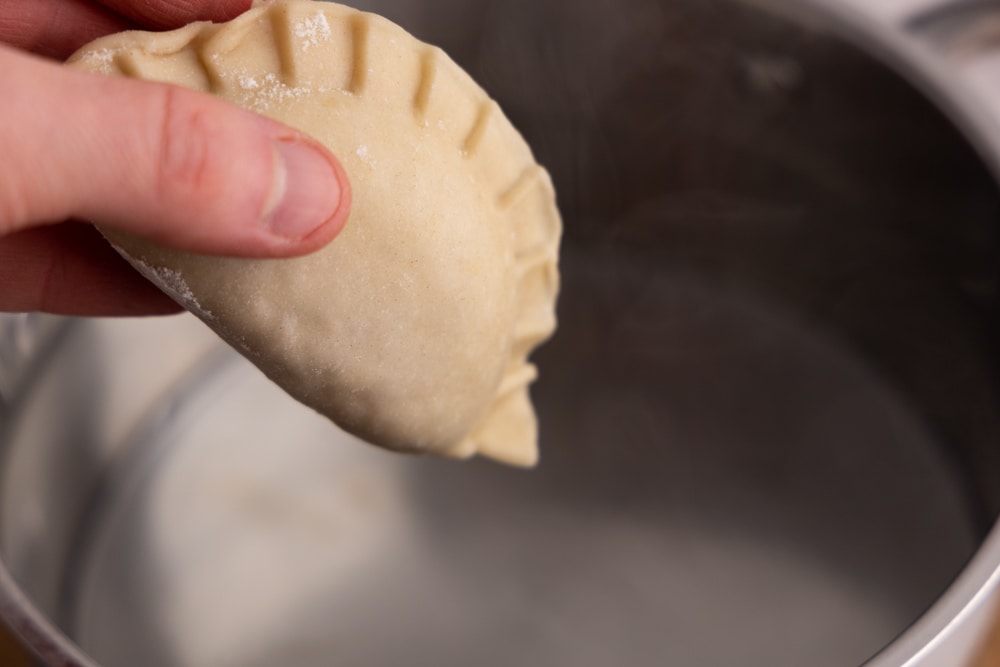
- Remove and serve. Remove the pierogi from the water using a slotted spoon and serve.
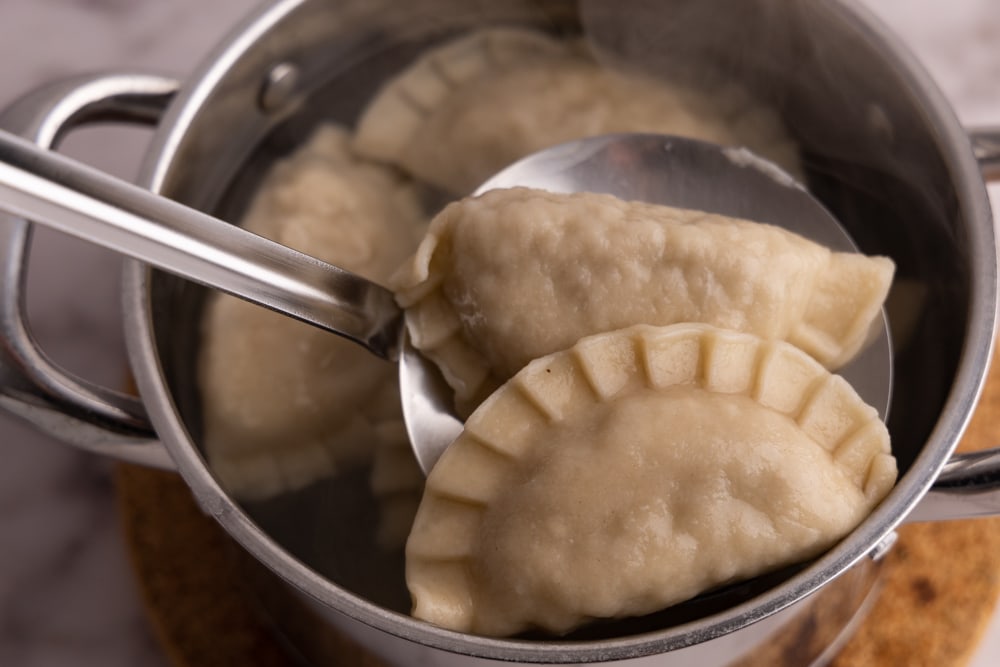
Recipe Tips
Here are some tips for making sweet cheese pierogi:
- Keep a small bowl of water nearby. When making the pierogi dough, it’s common to add flour gradually to achieve the right consistency. However, if you accidentally add too much flour and find that the dough edges don’t want to stick together, don’t worry. Simply keep a small bowl of water nearby. If needed, moisten your finger with water and run it along the edges of the dough. This will help seal the pierogi and prevent them from opening during cooking.
- Start boiling water halfway through. Start the water boiling about halfway through your pierogi-making process. Once it reaches a boil, you can cook the already-prepped pierogi while forming new ones. This saves about 10 to 15 minutes. Of course, you can start cooking the pierogi once you’re done forming the pockets and clean up your kitchen while they cook. It’s up to you.
- Simmer, don’t scald. A gentle simmer is all you need to cook these delicate delights. Cranking up the heat to a rolling boil might make your pierogi feel too much pressure, and they might tear. Let’s keep them whole and happy, shall we?
- Filling texture is key. When flavoring the filling, we’re aiming for one that’s firm enough to stay put, so hold off on tossing in a couple of eggs or half a cup of heavy cream. Those will just make the filling too soft and tricky to handle. That’s why little additions like jams and jellies are your culinary BFFs here. They pack a flavor punch without turning your filling into a gooey mess, and a couple of teaspoons will do the trick nicely.

Subbing in Ricotta
Got some ricotta cheese sitting in your fridge? Well, you’re in luck! You can totally use it in place of cream cheese for these sweet cheese pierogi. Just keep a couple of things in mind:
- Ricotta is softer. It’s softer than cream cheese, so you’ll need a bit more rice to get that nice, firm filling. Instead of the usual 15 oz of cream cheese mixed with 12 oz of overcooked rice, shift the balance toward rice. Think something like 14 oz of rice and 13 oz of ricotta. And hey, these are just rough guidelines, so if you use a bit more rice and less ricotta, that’s A-OK.
- Ricotta tastes pretty neutral. Unlike the tangy farmer’s cheese and cream cheese, ricotta’s flavor profile is more on the neutral side. But don’t worry; you can jazz it up with a teaspoon or two of lemon or lime juice. Just enough to give it a little kick without puckering up your taste buds.
And there you have it! A little tweak here and there, and your ricotta’s ready to roll into some scrumptious pierogi.
How to Serve
To serve sweet cheese pierogi, you have a few delicious options:
- Enjoy them as they are. Sometimes, less is more! You can absolutely enjoy these pierogi straight out of the pot. Trust me, the soft dough paired with the creamy cheese filling is a winning combo all on its own.
- Pan-fry them. Melt a little butter in a non-stick skillet and pan-fry the pierogi until golden brown and crispy. Oh, and don’t be shy about drizzling that melted butter right on top when you plate them. Butter makes everything better!
- Top with sour cream. Thinking about an extra touch of creaminess? Spoon some sour cream on top of your pierogi. The cool tang of the sour cream plays so nicely with the warm, cheesy filling. You’ve got to try it!
- Sprinkle with powdered sugar. If your taste buds crave a bit more sweetness or want to impress with your presentation, dust your pierogi with a sprinkle of powdered sugar.
Those are only some of the choices you have. Check out my article on pierogi toppings for more options.
Storage
To store sweet cheese pierogi, dry the cooked pierogi on large plates. This helps to remove any excess moisture and prevent them from sticking together. Once they are dry, transfer the pierogi into a container with a tight-fitting lid to prevent them from drying out or absorbing any odors.
Once done, move the container to the refrigerator, where the pierogi will last 3 to 4 days. If that’s not long enough, you can always freeze your leftover pierogi.
How to Reheat
The easiest and most delicious way to reheat sweet cheese pierogi is to pan-fry them. Here’s a step-by-step guide:
- Start by heating a non-stick skillet or frying pan over medium heat. Add a small amount of oil or butter to the pan and allow it to melt and coat the surface evenly.
- Place the pierogi in the pan, ensuring that they are not overcrowded. You want to give them enough space to cook evenly and get that perfect golden brown crust.
- Cook the pierogi for about 4 – 6 minutes on each side or until they are heated through, and the exterior becomes crispy and golden. Flip them gently with a spatula to avoid any filling leakage.
- Once they are cooked, transfer the pierogi to a serving plate and enjoy.

Equipment
Ingredients
Pierogi Dough
- 2 cups all-purpose flour ~250g
- ¼ tsp salt
- 1 ½ tbsp oil
- ½ cup boiling water
Sweet Cheese Pierogi Filling
- 15 oz cream cheese ~425g
- 12 oz cooked rice ~340g
- salt for cooking
Flavoring Option #1: Jam
- 2-3 tablespoons jam
Flavoring Option #2: Mashed banana
- 1 large banana mashed
- ⅓ teaspoon cinnamon
- 2 teaspoons honey to taste
- 2 teaspoons lemon juice to taste
Instructions
Make Dough
- Boil Water: Boil a pot of water.½ cup boiling water
- Sift Flour: Sift flour into a large bowl.2 cups all-purpose flour
- Add Salt: Add salt and mix.¼ tsp salt
- Wet Ingredients: Add oil and boiled water.1 ½ tbsp oil
- Mix Ingredients: Mix the ingredients by stirring with a spoon. Be careful not to burn yourself. Once there is no visible water in the bowl, use your hands to knead the dough until it is a homogeneous ball.
- Wrap and Rest: Wrap the dough ball tightly in plastic wrap and let it rest for about 30 minutes before continuing.
- Make Pierogi: Once the wait is over, the dough is ready for rolling and making pierogi.
Prep Filling
- Cook the Rice: Start with 3 to 4 oz of rice, cook with ample water (5x the rice volume), and overcook by a few minutes for a creamy texture. Strain the remaining water.12 oz cooked rice
- Mix the Filling: Combine cream cheese, overcooked rice, and your chosen flavoring. Adjust sweetness and tanginess to taste.15 oz cream cheese, 12 oz cooked rice, 2-3 tablespoons jam, 1 large banana, ⅓ teaspoon cinnamon, 2 teaspoons honey, 2 teaspoons lemon juice
Combine
- Roll and Cut the Dough: Divide the rested dough into sections. Roll thin and cut into circles. Save leftover scraps for extra pierogi.
- Shape the Pierogi: Fill dough circles with cheese filling, fold, and seal the edges. If needed, use a damp finger to help seal.
- Transfer and Cover: Move shaped pierogi to a floured surface and cover with a damp towel.
Cook
- Boil the Pierogi: Boil in salted water until they float and then an additional 1-2 minutes. Stir the pierogi right after you submerge them in water, so they don't stick to the bottom.salt
- Scoop and Serve: Use a slotted spoon to remove pierogi and serve as desired.
Notes
To reheat the pierogi, pan-fry them in butter until golden brown and crispy on both sides.


